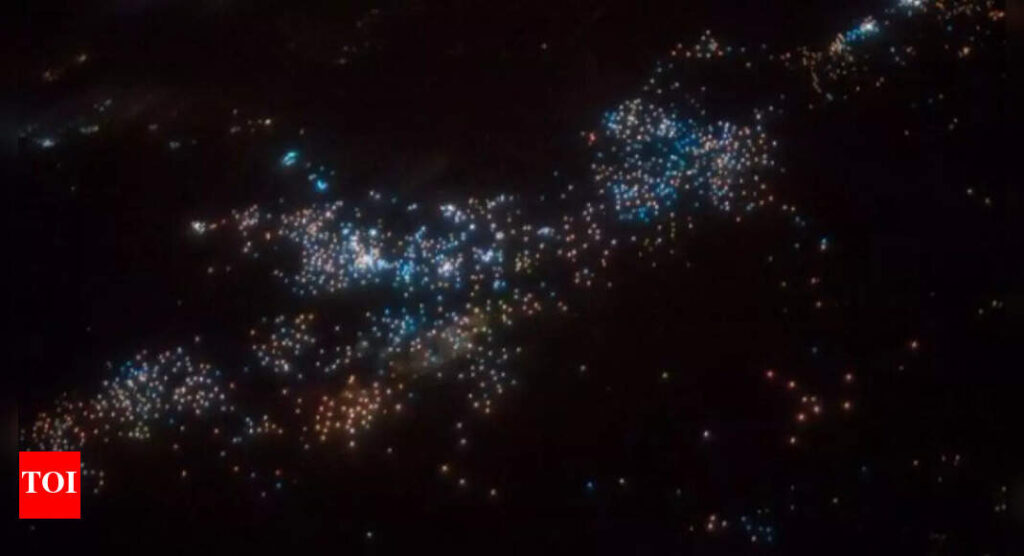An eye-opening recent image from the International Space Station (ISS) revealed the enormous extent of China’s distant-water fleet of fishing vessels. This is captured by astronaut Don Pettit and uploaded to the internet by his son, A. Pettit, the photo shows a breathtaking number of bright spots scattered against the blackness of the sea, each an individual fishing boat.Unlike what would be mislaid as glinting urban lights of a coastal city, the spectacle then actually captures hundreds of trawling fishing vessels, dispersed out from the sea and out aggressively searching the seabed.
NASA astronaut observes China’s fishing fleet from space
The sheer visual effect of this image has provoked international reaction. Only from space is the clarity of view sufficient to portray the vast size and glittering extension of the fishing fleet, visible from space, which attests to the international extent and power of industrial fishing.Japanese astronaut Satoshi Furukawa, in response to the bittersweet photo, uploaded a video of an analogous scene during his own ISS expedition. He did so quote-sharp as Charles Dickens: “It is the best of times for fishing, it is the worst of times for fish.” The cultural allusion underscores the irony of human progress: advanced gadgetry and global supply chains on one hand, pollution on the other.
World’s largest far-water fishery fleet
China has the world’s largest far-water fishery fleet. More than 2,700 Chinese ships are known to fish far from China’s coasts and net and longline their way through nearly all ocean basins. Their harvest typically consists of valuable species such as squid, tuna, and some kinds of deep-sea fish, with catches even being transported thousands of miles away to Chinese ports or overseas.Compared to coastal or near-shore fisheries, far-flung operations usually go without effective regulation. The reach of such fleets enters international waters and the EEZs of other nations, raising eyebrows as to their environmental and geopolitical impacts.
How satellite technology exposes the hidden world of ‘going dark’ in global fishing
Satellite imaging and radio-frequency tracking equipment made it possible to monitor the travel and activities of fishing vessels globally. One trend, though, has been evident in the case of most Chinese vessels: the “going dark” practice.This tactic is a disabling of onboard Automatic Identification Systems (AIS), used to prevent collisions and encourage maritime transparency. Since ships disable AIS, they become invisible to the authorities and to surveillance agencies. The application has been typically linked to illegal, unreported, and unregulated (IUU) fishing, which is depleting the world’s fishery resources and evading global law.
China’s distant-water fleets and their impact on marine ecosystems
In highly biodiverse waters such as the South China Sea and seas surrounding the Galápagos Islands, China’s distant-water fleets have been blamed for:
- Overfishing and depleting susceptible species, some of which are slow to replenish or already vulnerable.
- Damaging marine ecosystems such as coral reefs and seamounts through bottom trawling and other harmful methods.
- Disturbing regional economies, particularly in developing countries where coastal communities depend substantially on small-scale, sustainable fisheries.
- Excessive fishing of jointly managed fish stocks can have spillover impacts on marine food webs, destabilize ecosystems, and heighten tensions between bordering states.
China’s distant-water fleets
Besides ecological concerns, security specialists suggest China’s distant-water fleets are able to fill broader strategic roles. According to some experts, some analysts believe the fleets follow a concept dual in purpose both economically and geopolitically. Chinese fishing vessels were reportedly detected within contested seafloors where they are speculated to augment claims, engage in spying operations, or back up naval functions. Such actions are a source of concern to nations with competing claims in contested waters, particularly the South China Sea, whose maritime boundaries are extremely contentious.
Satellite views of industrial fishing spark calls for regulation
The satellite images are more than an awe-inspiring view—they’re a sobering look at the scale and complexity of industrial fishing and its effect on the well-being of oceans and global stability. As such images go viral on social networks and among eco-circles, they reinforce calls for international cooperation, regulation, and technology disclosure in managing the world’s seas.As man grasps for the stars, the perspective back toward Earth highlights that some of our biggest challenges remain connected to the waters below.Also Read | NASA’s rare look inside Uranus reveals fascinating new discoveries


